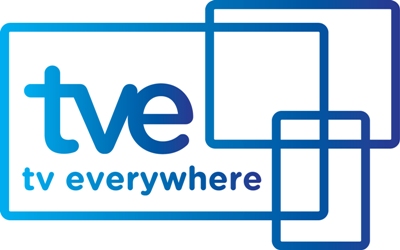Getting to Know ‘tv everywhere’

In an unprecedented campaign to educate cable-TV subscribers about viewing their shows on digital devices, a coalition of operators and programmers are backing an industry-wide marketing effort to promote “tv everywhere.”
The marketing group CTAM has embraced that term, written intentionally in lower case, and wants its member companies to promote it using a new logo (pictured) combining those words with images of multiple screens.
CTAM also is recommending practices that programmers and pay TV companies should use to make the signin experience easier and more consistent for consumers. The recommendations and other aspects of the campaign are on the new website ctamtve.com.
The industry group will also publicize data about consumer use of TV-everywhere services through a partnership with Adobe Primetime.
The recommendations and an action plan approved unanimously by the CTAM board of directors last week came from a committee of 20 programmers and cable operators that started working on them last August. Among the goals is to have half of all cable subscribers be aware of TV everywhere by the end of the year, up from perhaps 20% now, and to have half of those who are aware of TVE become regular users.
The point is to make customers feel they’re getting more value from their cable subscription because they can watch the shows they love on devices other than the home TV.
“It really is the trump card in terms of multiplatform video product, and it comes as no additional cost to a pay TV customer. It’s part of the pay TV experience,” Cable & Telecommunications Association for Marketing CEO John Lansing said about the initiative being announced this week.
The smarter way to stay on top of the multichannel video marketplace. Sign up below.
Compared to an $8-per-month over-the-top service, offering past seasons of shows plus some new original series, TVE is “all original, it’s all last night, it’s live streaming and it doesn’t cost you another nickel,” Lansing said.
CTAM defines TV everywhere as any app or website that lets consumers watch programs they can see on pay TV on multiple devices, after verifying their pay-TV subscriptions. (CTAM recommends using “verified” rather than the vague term “authenticated.”)
Programmer apps such as HBO Go, Watch ESPN or FX Now are included. So are cable-company products, such as Comcast’s Xfinity to Go, Time Warner Cable’s TWCTV or Cablevision’s Optimum app.
The term “TV everywhere” has been an industry buzzword since at least 2009, when Time Warner Inc. CEO Jeff Bewkes touted it at the Cable Show convention as a vital extension of the existing business model. But it’s not a concept consumers know well, at least not yet.
Lansing said research done among cable customers in fourth-quarter 2013 found about 20% were aware of the TVeverywhere concept. Awareness might now be higher after online viewing of the Sochi Winter Olympics and NCAA Men’s Basketball Tournament, he said, and CTAM will have some newer research to share in May.
CTAM said the TV-everywhere term tested well among cable subscribers. “Consumers got it, they liked it, there was an affinity for the clarity of what the experience was if they thought about TV everywhere,” Anne Cowan, senior vice president of communications and marketing, said. CTAM had worried that consumers might react negatively to the term, because it sounded like an “overpromise” or because they felt TV wasn’t everywhere, she said.
But those reactions “never came up,” she said. “It won on so many counts that we were thrilled to be able to use it” after Dish Network, in February, dropped a trademark claim on the term. Cable companies had opposed Dish’s trademark effort.
It’s not hard to find skeptics of the term within the TV industry, though.
Evan Shapiro, the president of the Pivot network, got a conversation going on Twitter last week after remarking: “Shouldn’t the TV Biz agree ‘TV Everywhere’ isn’t sinking in? Viewers now assume TV IS everywhere. Let TVE Apps just be ‘TV Apps.’ ”
Rich Greenfield, the BTIG Research analyst, weighed in with Shapiro on Twitter, saying, “Sadly, the more appropriate term is #TVNotEverywhere given the randomness of what/where content can be consumed.”
Shapiro told Multichannel News he supports efforts to educate consumers about pay TV services but, echoing Greenfield, said “the problem is, it’s not really everywhere.” That’s mostly because many programmers (other than Pivot) have held back rights to viewing outside the home, he said.
Consumers look for brands or, more often, shows or events like March Madness online, so the industry should be trying to improve the product — making all pay-TV content available anywhere to verified viewers — rather than promoting a generic term, Shapiro said.
Cowan said the initiative is as much about improving the user experience as it is about the TV-everywhere name. CTAM expects 75% of members — which include 16 cable companies and 25 content providers — to adopt the sign-in recommendations and to support consumer marketing of “tv everywhere” by year’s end.
Mark Garner, the A+E Networks senior vice president who co-chaired (with Comcast’s Matt Strauss) the TVE effort, said he has long encouraged CTAM to start promoting TV everywhere, calling it “the biggest thing that is happening in this industry.”
“The success of TV everywhere is predicated on consumers understanding what it is and using it,” he said. “From my perspective, from this company’s perspective, it is a top priority for the industry.”
Garner also said programmers shouldn’t be blamed for holding back out-of-home rights when, often, those rights are still being negotiated with content owners. “Going forward, you will see networks like ourselves and others resolve those issues,” he said.
For antitrust reasons, other pay-TV providers, such as satellite-TV or telco-TV companies, can join the effort if they would like to, by paying a fee, CTAM said. Satellite-TV and telco-TV companies are not eligible for CTAM membership, but "CTAM has been, and remains, open to cooperating with any MVPD on projects with mutual benefits," the organization said. "To date, that hasn't happened with tv everywhere." CTAM's TV-everywhere working groups were first reported last fall, when Lansing came on board to replace the retiring CTAM CEO Char Beales.
Cowan said consumer messaging this year would mostly be from “earned media” coverage and social platforms, but there could be local or national spots on paid media in the future.
CTAM’s tve GOALS
The TV-everywhere initiative’s year-end targets are:
50% awareness of TV everywhere by cable customers.
50% usage of TV everywhere by cable customers aware of TVE.
75% adoption by CTAM member companies of the first TVE sign-in recommendations.
75% participation by CTAM members in consumer marketing.
SOURCE: Cable & Telecommunications Association for Marketing
Kent has been a journalist, writer and editor at Multichannel News since 1994 and with Broadcasting+Cable since 2010. He is a good point of contact for anything editorial at the publications and for Nexttv.com. Before joining Multichannel News he had been a newspaper reporter with publications including The Washington Times, The Poughkeepsie (N.Y.) Journal and North County News.

